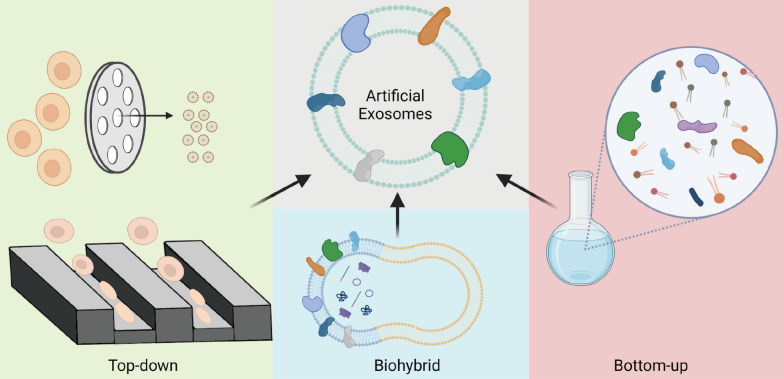- Record: found
- Abstract: found
- Article: found
Artificial exosomes for translational nanomedicine

Read this article at
Abstract
Exosomes are lipid bilayer membrane vesicles and are emerging as competent nanocarriers for drug delivery. The clinical translation of exosomes faces many challenges such as massive production, standard isolation, drug loading, stability and quality control. In recent years, artificial exosomes are emerging based on nanobiotechnology to overcome the limitations of natural exosomes. Major types of artificial exosomes include ‘nanovesicles (NVs)’, ‘exosome-mimetic (EM)’ and ‘hybrid exosomes (HEs)’, which are obtained by top-down, bottom-up and biohybrid strategies, respectively. Artificial exosomes are powerful alternatives to natural exosomes for drug delivery. Here, we outline recent advances in artificial exosomes through nanobiotechnology and discuss their strengths, limitations and future perspectives. The development of artificial exosomes holds great values for translational nanomedicine.

Related collections
Most cited references119
- Record: found
- Abstract: found
- Article: not found
The biology, function, and biomedical applications of exosomes
- Record: found
- Abstract: found
- Article: not found